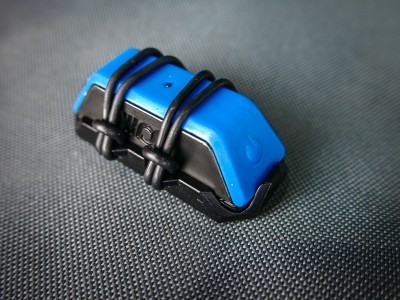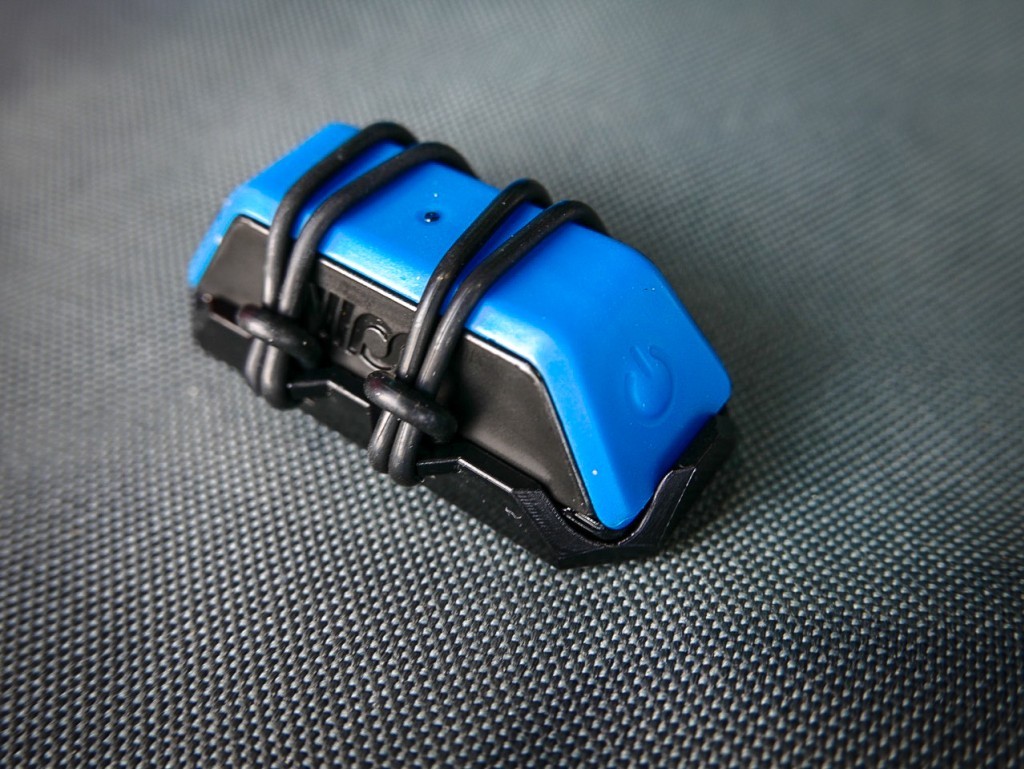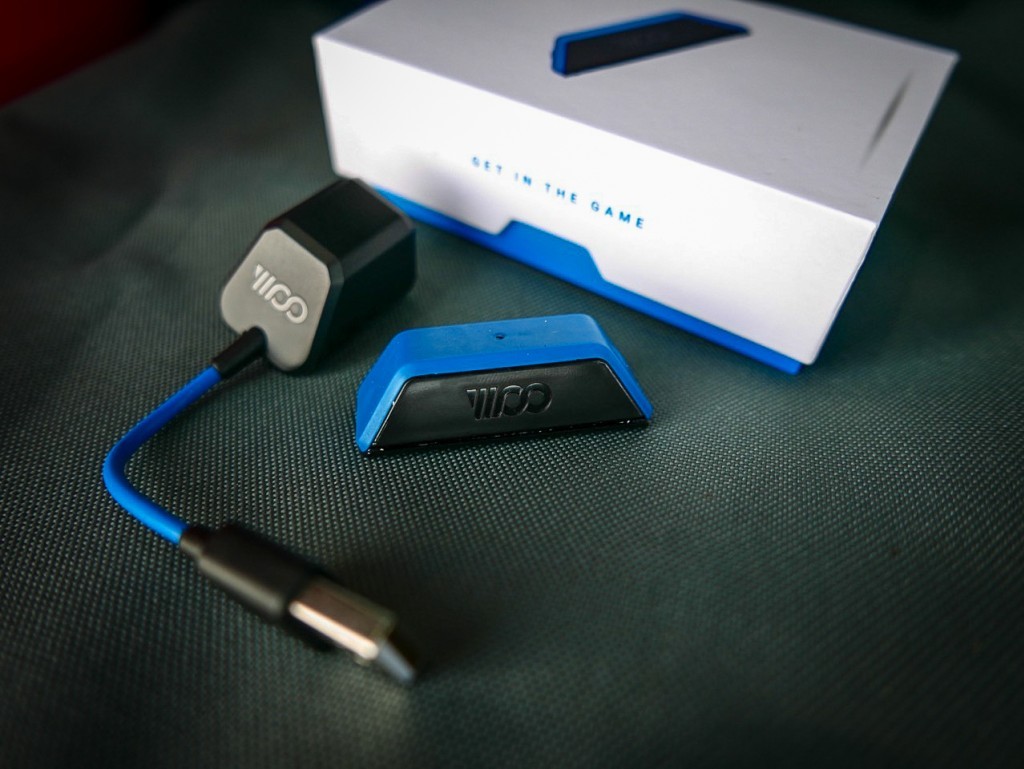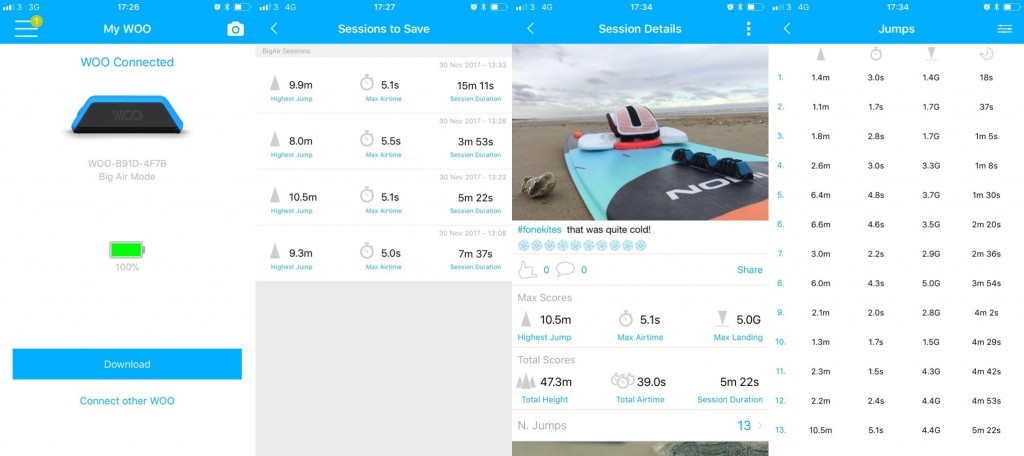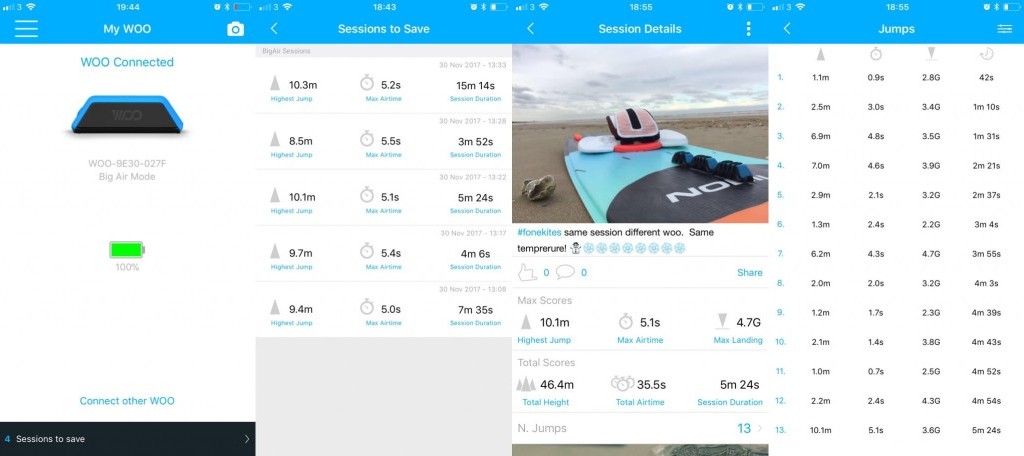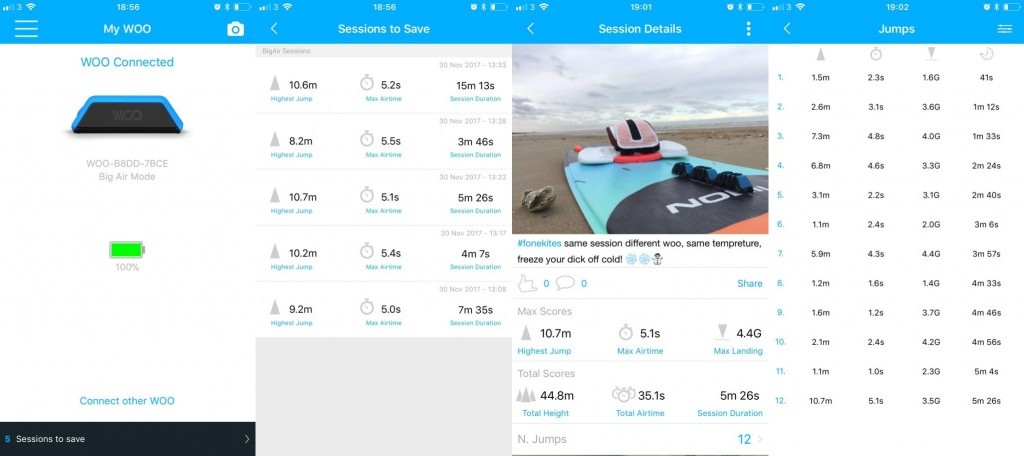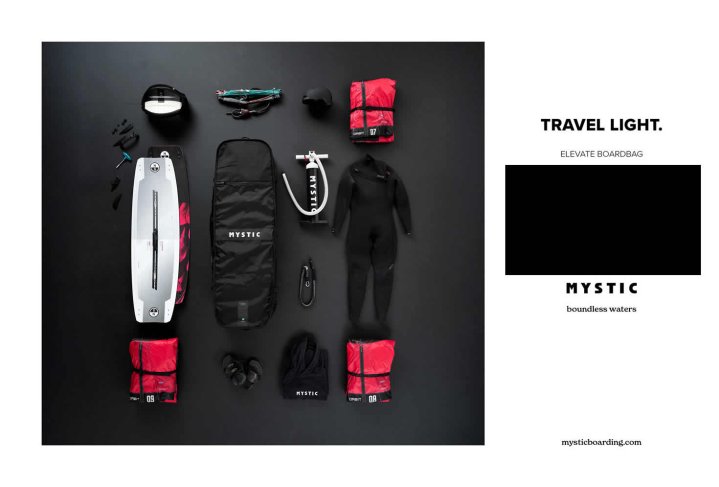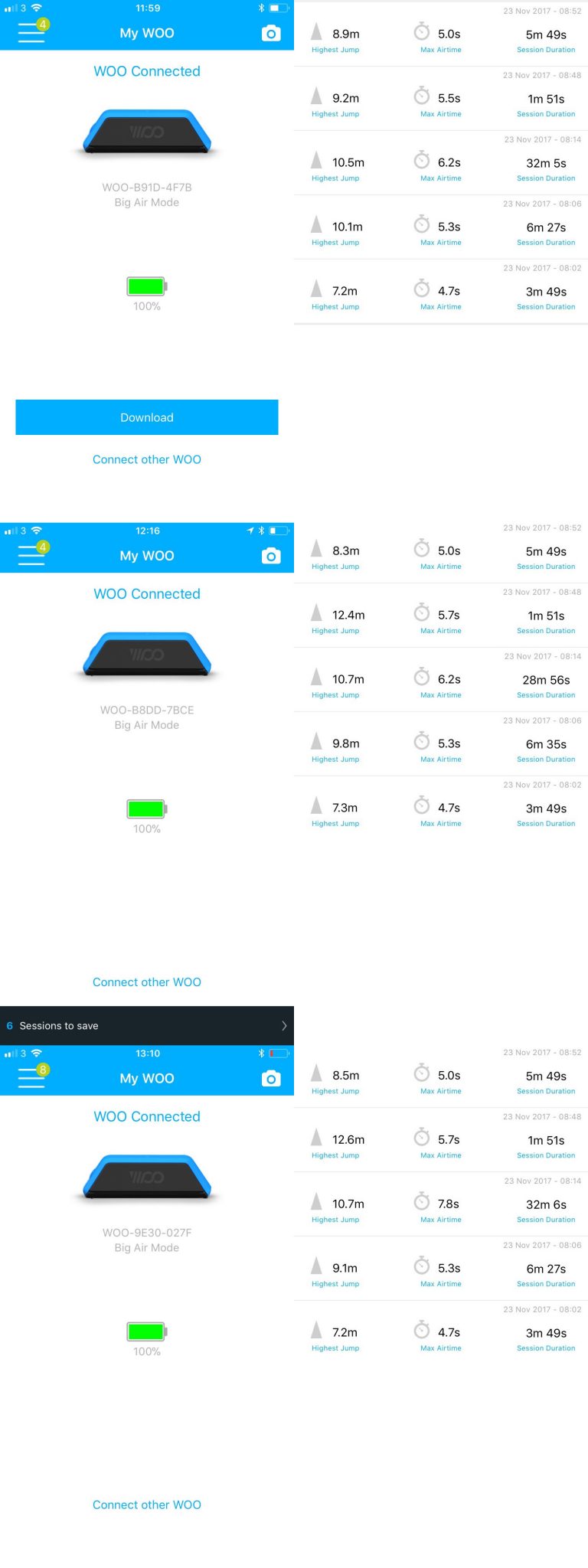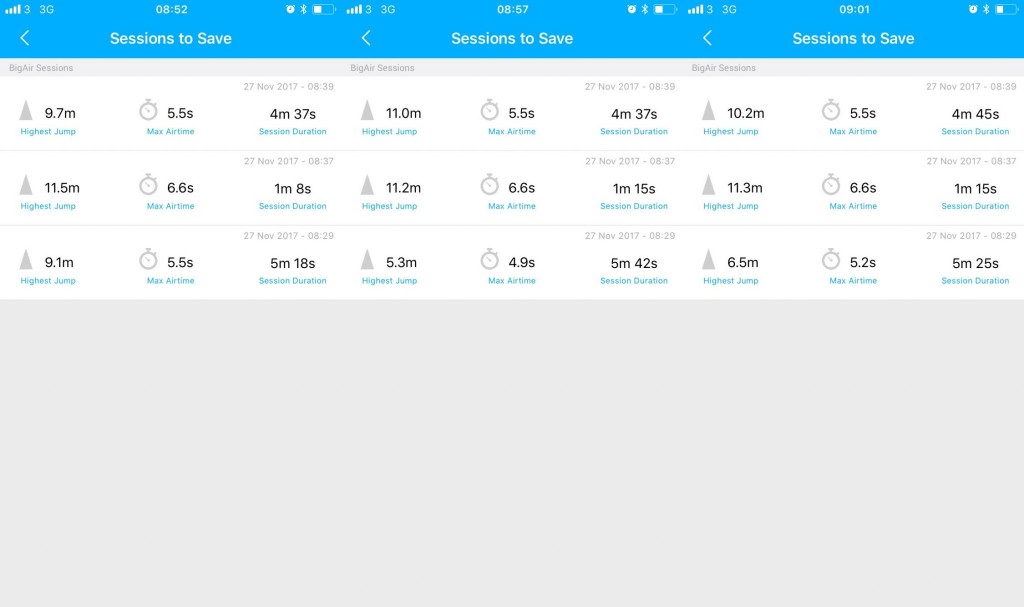At A Glance
WOO Sports burst onto the scene a couple of years ago with a bold promise to measure your jumps while you rode and track your sessions. Since those early days they have garnered an army of followers generating hundreds of thousands of sessions with WOO competitions and leader boards going global as well as local as everyone seeks to improve their scores.
The ultimate goal was to gamify kitesurfing, something that has proved very popular in other areas and to say it has been a success would be an understatement. However it’s not been without it’s teething problems. We were sent three WOO 1.0 when they first launched, our initial test yielded mixed results with one of the devices dying on us.
It didn’t take long before they all stopped working and issues with the mount and waterproofing were identified and adjusted accordingly. The initial issues seem to have now been ironed out and there are plenty of happy customers to back that up.
The accuracy of the devices has always been called into question; I’ve personally been very sceptical about the ability of an accelerometer to accurately measure your jumps. Indeed there are plenty of tales of odd recordings and I have my fair few too. These days though the technology has been upgraded and improved firmware has the devices pegged as being more accurate than ever.
Kudos to WOO when they asked us to do this test I explained we would hold no punches and test the devices back to back against each other rigorously for accuracy. On this proviso they sent us two new devices which we partnered with a third device previously owned by one of our testers.
On The Water
Setting up a WOO is a very simple process, the team have worked hard behind the scenes and the technology is sound, both within the device, which is fool proof and the app itself. Recent years have seen countless updates to the App and there is a pretty slick offering for both Android and Apple users.
The Leaderboards have been developed so riders can compete not only on the world stage but also against their mates at the local beach. This element makes the WOO more inclusive than ever before. For sure you probably won’t be battling for Joshua Emmanuel’s current record of 29m, but there is a good chance you can take on your buddies down the beach.
It is this last element that cannot be overlooked. What WOO have done for reinvigorating freeride kitesurfing can’t be understated. I know plenty of riders who have dusted down gear out of the garage and got back to the beach to take on their mates. That’s a great thing for kiteboarding whichever way you look at it.
We tested the devices over a number of weeks in various conditions using various tests. All three were strapped to the same board, and checked for accuracy. We did tests where just one jump was performed as the rider rode out, jumped and rode back. We then stopped the session so we could analyse the results.
We did other sessions where five jumps were performed in quick succession and then the devices were stopped so we could analyse the data. Lastly we did a few sessions where the devices were left on for long periods of time and for the duration of an “average” session of an hour and a half. Again back at the computer that evening the results were analysed.
Our test was hoping to find the best WOO out of the three devices, in other words the one that “over recorded” the data, so he could keep that one to do battle with his mates. Sadly he was disappointed. We did find some very interesting results throughout the test though. If you are reading this in the magazine, check out the test on the website where we will publish all the results of each three devices from each session.
Essentially when you do a big jump each Woo would spot it and record impressively close results, sometimes to within half a metre. Where the devices struggled was recording the smaller jumps as you bounce around off the chop and the waves during a session.
This led to the total number of jumps often being wildly different, especially during the longer sessions we recorded. However all the major jumps were recorded with good accuracy. When we did the shorter sessions it was easy to see how this happened.
During the one jump session each device would record the major jump, but equally they would record smaller jumps as the board bounced off chop with varying accuracy. The important take away here is that you don’t need to worry about these smaller jumps as the goal with the WOO is to record the biggest of the session.
On occasion each device would also randomly record something that seemed like a freak score or freak reading. Out of the hundreds of jumps we did this is only to be expected and WOO themselves try and manage these random results. If Joe Bloggs suddenly jumps 30m and evey jump they have ever done before was only 5m for instance they will flag it as an error.
Technology is never perfect, so this small anomalies are to be expected, they happened on a far more infrequent basis than we were expecting though. And we were surprised by the accuracy of the devices.
You could argue that while we were drilling down into the nitty gritty of the accuracy and pouring over the data, we were missing the point. WOO don’t claim to be 100% accurate 100% of the time, they recognise the device for what it is, a device. It has it’s flaws, but the WOO 2.0 as reduced those flaws to a minimum and is an incredibly good bit of kite.
More than that though WOO have successfully built a community of fans who are having fun on the water, and that is what kitesurfing is all about. If the WOO encourages you to get on the water and have some friendly competition with your friends then that’s fantastic, and great for the sport.
There is however a negative side to turning kiting into a competition, and I wouldn’t feel comfortable publishing this test without highlighting it. You MUST ride within your limits, in the hunt for WOO scores we are seeing more and more kiters taking risks and riding in bigger and gnarlier conditions often way over powered.
While the Pro’s can handle this as they train for it and build up to it, it is really important for your own safety you consider you ability and risk assess every session you have. Are you wearing safety gear, and impact vest is a must if you plan on going big, a helmet is another step in the right direction.
As I have said time and time again with kitesurfing, it is great fun, but it isn’t worth dying for. Ride hard, fly safe and post your WOO scores knowing they are pretty damn accurate when you consider what they are trying to achieve.
Overall
The WOO 2.0 was very impressive, it isn’t accurate 100% of the time, but in terms of recording major jumps during your session it is hard to question it’s ability to do that well. That’s good news for WOO and bad news for people who like to blame their device when they don’t get the scores they wanted!
This review was in Issue 66 of IKSURFMAG.
For more information visit WOO SportsBy Robin and Sukie
With years of kite sport experience combined, you can be sure you’ll be receiving the highest quality of knowledge on the best equipment the industry has to offer.


